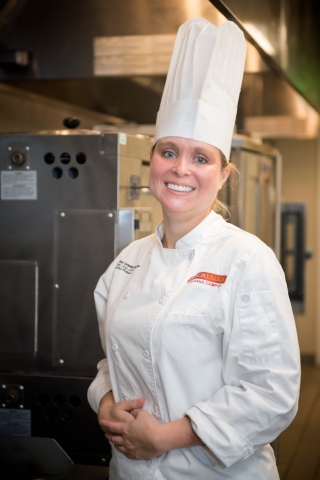
Teaching Proteins from Complete to Alternative
27 February 2023Surprising students with a broad range of proteins and their nutritional importance.
By Dr. Jennifer Denlinger, CCC, CHEP
Feedback & comments: This email address is being protected from spambots. You need JavaScript enabled to view it.
Sometimes, all students need is to taste something new for them to either open their mind to a new concept or completely change it. I have found tasting proteins, from their “as is” state to cooked in flavorful dishes, helps students understand the role of protein in food, the layering of flavors, and the effect of protein on a healthy diet.
Look below to find an excerpt from my PowerPoint where I teach students about incomplete, complete and complementary proteins and the nine essential amino acids required for a complete protein. I also go over different proteins and their nutritional benefits. After students calculate the nutritional values of different protein options, we talk about good choices for a healthy diet. In the “I can’t believe it’s not meat” section, I make vegan taco meat to have them eat and consider outside-the-box options they might serve their future customers.
If you are teaching nutritional concepts around fad diets, here you can help students understand whether or not these fad diets contribute to good health. I suggest you buy a few “diet meals” and have students compare them to dishes they know how to make. Compare the nutritional values of the meals. Then you can ask the students, “Besides taste and texture, what are the best (healthiest) decisions and why?”
We then move on to tasting proteins. I have them work in teams to cook several items. All the nutritional information comes from their textbook, however there are good websites available to garner additional information. One fun activity that can provide an opportunity to taste new items they may not have had in the past, is tasting high-protein items “as is.” I have them cook ground beef, chicken, bacon, tofu and quinoa. They taste most of them plain. However, I don’t find plain tofu very exciting and usually have it marinating in some sort of spicey or other tasty concoction to sear off. This also allows them to understand and taste versatile tofu.
Since food waste is frowned upon, consider using the “as is” protein items and creating a flavorful new dish. Items that could work - with a little advance mise en place – include quinoa salad that contains the bacon or use the tofu in the aforementioned exercise, or make some extra tofu marinade and have that as a dipping sauce for the chicken. Finally, you can take the ground beef and turn it into taco meat and then do a taste test between the ground beef and vegan taco meat from the PowerPoint lecture. There are always some surprises that come forth when being creative and expanding past the usual soy alternative protein options.
Attachments:
Vegan taco meat recipe
Proteins and complementary proteins PowerPoint
Protein vs. fat exercise
Chef Jennifer M. Denlinger, PhD., CCC, CHEP, is the Culinary Management Program Department Chair at the Poinciana Campus of Valencia College. She is also the vice president of ACF’s Central Florida Chapter. Additionally, Chef Denlinger earned the 2020 Innovation Award, sponsored by CAFÉ and the Idaho Potato Commission, for a creative escape room based on safe food handling procedures. She also earned the 2021 Green Award sponsored by the United Soybean Board and was runner-up in 2021 for the Postsecondary Education of the Year sponsored by Sysco Corporation.
